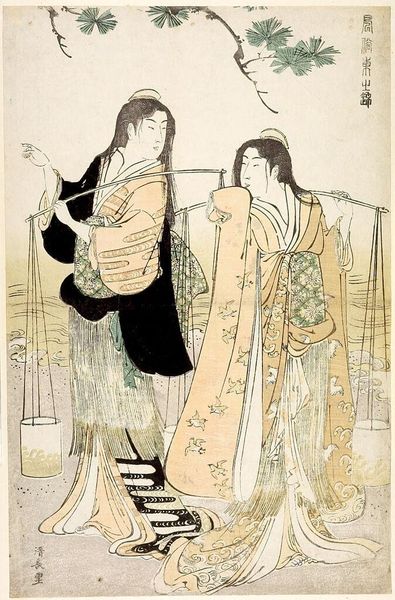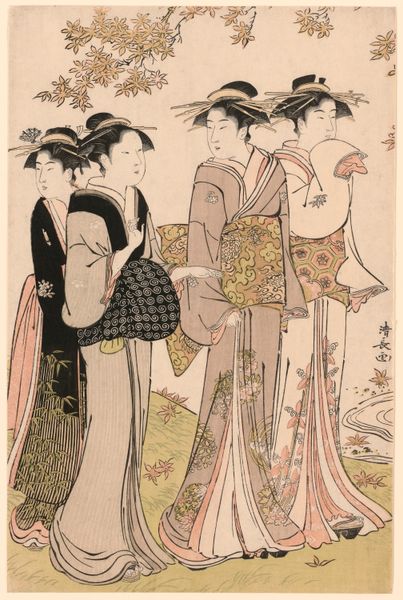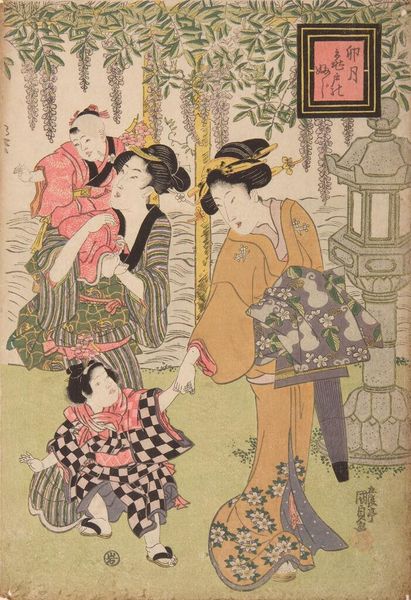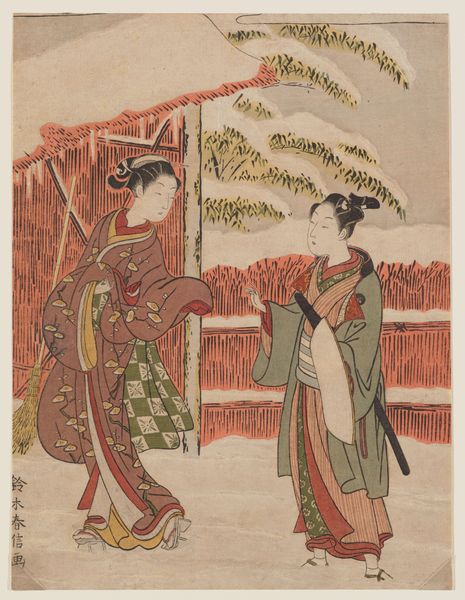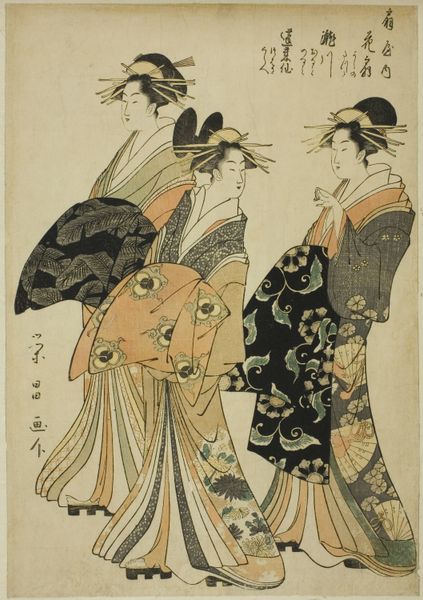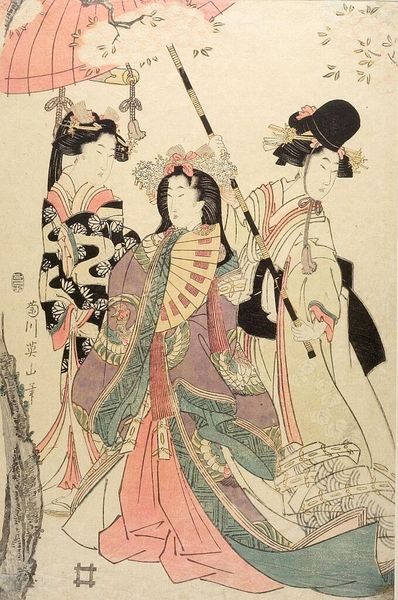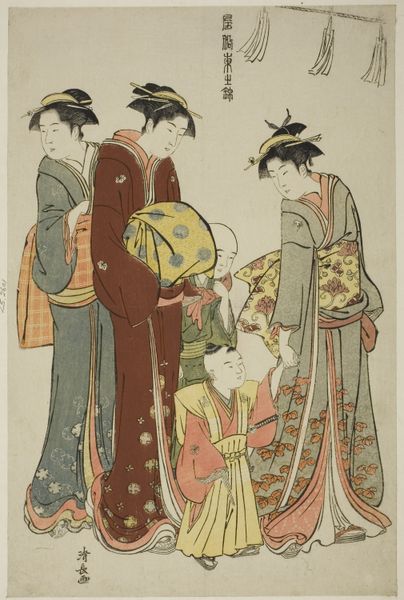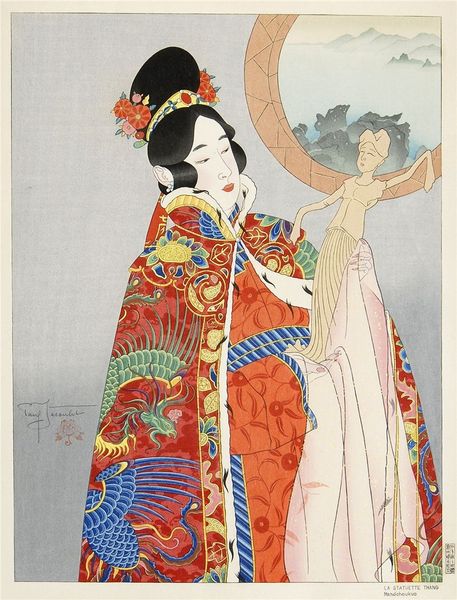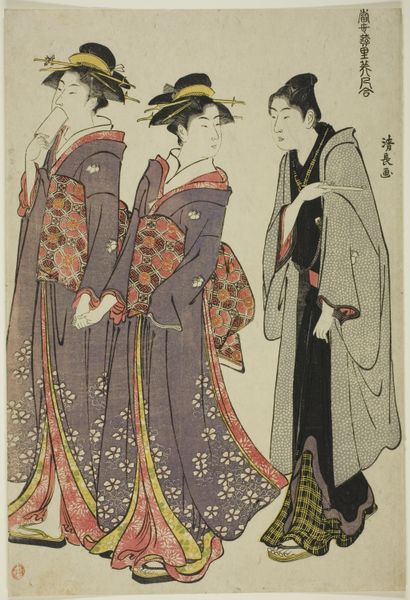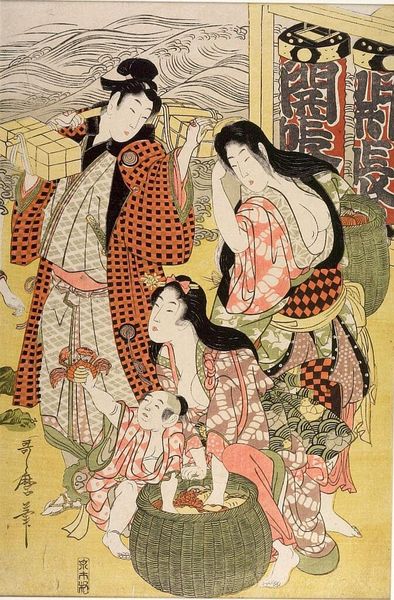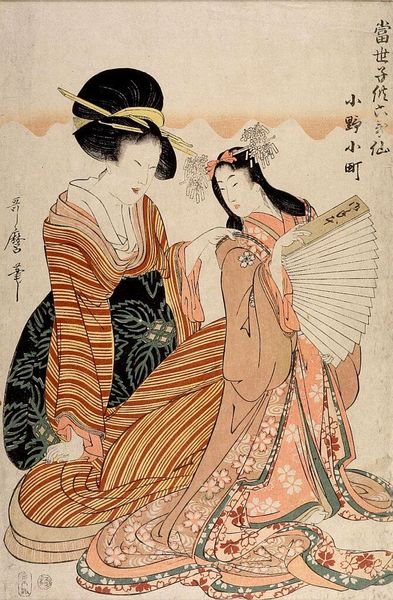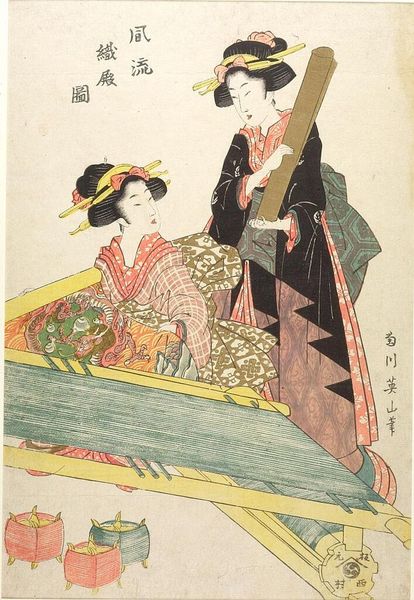
Dimensions: height 269 mm, width 180 mm
Copyright: Rijks Museum: Open Domain
This fashion plate, Très Parisien, by J. Dory, probably made as a print, presents a very self-conscious elegance. The colour palette is tight, muted, but with little pops of colour, like the coral of the table, or the ribbons on the dresses. There's an interesting tension between the flatness of the graphic style and the implied texture of the fabrics; look at the way the patterns are built up in layers, the suggestion of folds and drapes created with simple, confident lines. It feels considered, each mark carefully placed, and that is what gives the image it's feeling of cool detachment. And it’s this balance between the graphic and the textural, the simple and the detailed, that makes me think of Erté, another master of art deco illustration, but where Erté is often more theatrical and maximal, Dory feels a bit more restrained, chic, you might say. Art is like that, an ongoing conversation, always responding, reacting, and reinterpreting.
Comments
rijksmuseum about 2 years ago
⋮
Très Parisien promoted itself as chic and elegant. Between 1920 and 1936 it presented creations by such couturiers as Chéruit, Premet, Philip et Gaston, and Lanvin. The young, svelte models are all ultra-modern, shown talking on the phone, smoking and playing tennis. The illustrations also show that over the course of the 1920s, skirt lengths had risen to just below the knee, before dropping back down to calf length in the 1930s. The small plates were printed on transparent paper using a stencilling technique known as en pochoir and then hand coloured; many of them are unsigned. The signature ‘Joujou’ belonged to Germaine Paule Joumard, who was the director of Très Parisien, as well as one of the magazine’s illustrators.
Join the conversation
Join millions of artists and users on Artera today and experience the ultimate creative platform.
